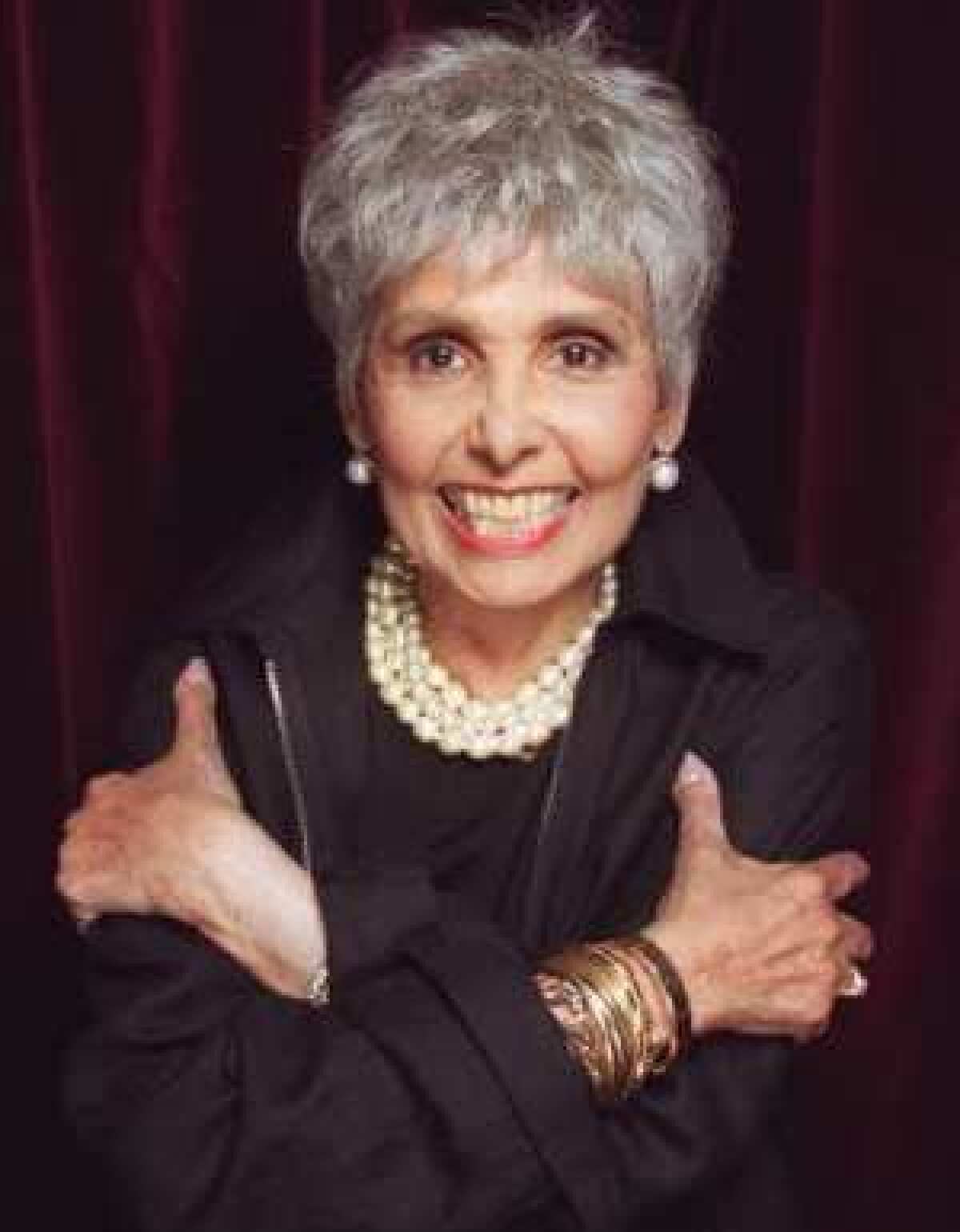Lena Horne biography tells of a star shaped by rejection, racism

According to James Gavin’s new biography, “Stormy Weather: The Life of Lena Horne,” the legendary singer-actress was never comfortable being an icon.
“As I say in the introduction of my book, icons are not allowed to be human beings,” explains Gavin, a lifelong fan who interviewed Horne in 1994. “Once you step up on that pedestal . . . and everyone is scrutinizing your every move -- how do you function as a human being? You have to cover up mistakes you made.”
And the breathtakingly beautiful Horne, who broke down barriers for African Americans in the 20th century, “had to be all things to all people. She had to constantly think about her image.”
While she was in Hollywood, the NAACP schooled her in “perfect public deportment at all times,” Gavin says.
“When you are remembering your image -- how can you live your life? You have to sacrifice a lot of freedom. This was a very hard way for her to live.”
Constant rejection from her parents as a child, Gavin says, also made Horne “hyper-sensitive to things like rejection. Every perceived or real slight, she recoiled from it in a violent way. This does not make for a happy lady. She was angry.”
Gavin, who is also the author of “Deep in a Dream: The Long Night of Chet Baker,” spent nearly four years on “Stormy Weather,” talking with several chorines who worked with Horne at the famed Cotton Club in Harlem in the 1930s, MGM costars such as Betty Garrett, and friends and colleagues including Ruby Dee, Tony Bennett, Diahann Carroll and Arthur Laurents. Horne’s daughter, Gail Lumet Buckley -- who wrote the book “The Hornes: An American Family” -- gave her blessing to Gavin on the project.
A reclusive figure
As for the 92-year-old Horne, Gavin says, “she has long been reclusive and completely closed the doors on interviews and public appearances. Sad is not a word that people want to associate with Lena Horne, but unfortunately, she paid an enormous price for her victories.”
Horne was born on June 30, 1917, in the Bedford-Stuyvesant neighborhood of Brooklyn. Her father was a gambler who left the family when she was 3; her mother was an actress. Horne was mainly raised by her grandparents, Cora Calhoun and Edwin Horne.
“She came out of what was called the ‘black bourgeoise,’ ” Gavin says, “a very elite, typically fair-skinned minority of black people who managed to fit into white society by virtue of their skin color, their education, upward striving and very refined well-to-do bearing. . . White people liked the way they looked or they had some kind of talent that made them acceptable. And you were supposed to be grateful for it.”
But not Horne. “One of the things that is fascinating about the young Lena Horne is that she didn’t make allowances for the racism of the times,” Gavin says.
“She had largely been raised by a very steely suffragette grandmother who trained her not to tolerate this sort of thing,” he continues, “and there she was performing at the Cotton Club in a very racist atmosphere, and she was not sitting still for it. A lot of the other girls accepted that this was as good as it was going to get. But Lena Horne was not content with this.”
In fact, Gavin says, “her story is reflective of almost every stage of the civil rights movement of the 20th century. There is something about her life that is so emblematic of the unfolding of the civil rights struggle.”
And Horne’s struggle against racism was Herculean. Despite her name and popularity, she endured the racism of clubs in Las Vegas and big cities where she would be segregated from her white audience. Still, though she had a deep mistrust of most white people, she married the white Lennie Hayton, one of MGM’s best musical directors.
In a 1981 “60 Minutes” interview with Ed Bradley, Horne said she had married Hayton because she needed his connections.
Gavin, however, doesn’t think that’s true. “People who were around Lena and Lennie in the late ‘40s and ‘50s say they were very loving,” he says. “I do believe she was in love with this man. Was she opportunistic in terms of being very ambitious and wanting all the advantages that marriage could bring? Absolutely. But I don’t think it was cold and ruthless as she made it sound.”
And yet, Horne has never been described as a warm and fuzzy person. Her coldness toward people, Gavin says, was a defense mechanism. “When you grow up and you feel rejected at every turn. . . . your father disappears and your mother is obsessed with her own career and you feel like you are a piece of heavy, unwanted baggage at that tender and impressionable age, Lena never got over it.”
Issues with mother
In fact, her problems with her mother were front and center when Horne did her 1981 one-woman show on Broadway. “She was still talking about how she wanted to make her mother happy and her mother always said, ‘If I had been in your shoes, I would have done a much better job,’ ” Gavin reports. “It was still eating at her in 1981.”
So was the fact that MGM wouldn’t let her play the role of the mulatto performer Julie in the 1951 film version of “Show Boat.”
That movie, Gavin says, “has become emblematic of the racism that Lena Horne suffered.” But the real story, Gavin insists, is much more complicated.
“The part of Julie would never have been played by Lena Horne because you really can’t have a black woman . . . playing the part of a woman light enough to pass for white because it would spoil the dramatic turning point.”
In addition, he suggests, Horne was not a great actress. “But the biggest factor was the miscegenation laws. On-screen you could depict an interracial relationship, but you could not do it with a black actor and a white actor together.”
Gavin believes MGM has been unfairly vilified as racist because except for the 1943 all-black musical, “Cabin in the Sky,” Horne was relegated to musical numbers in films, which made it easy for censors in the South to excise her scenes.
Rather, he explains, “I think MGM was progressive in what it did -- deifying a black woman on-screen for the first time.”
He continues: “She was presented in film after film as a goddess. She didn’t bow to anybody. This was revolutionary at the time to see a black woman, albeit a black woman who was being presented in very Caucasian terms, glorified in that manner. Before MGM, Lena Horne had made a couple of poverty row race movies. . . . But she left MGM an international star.”
More to Read
The biggest entertainment stories
Get our big stories about Hollywood, film, television, music, arts, culture and more right in your inbox as soon as they publish.
You may occasionally receive promotional content from the Los Angeles Times.











